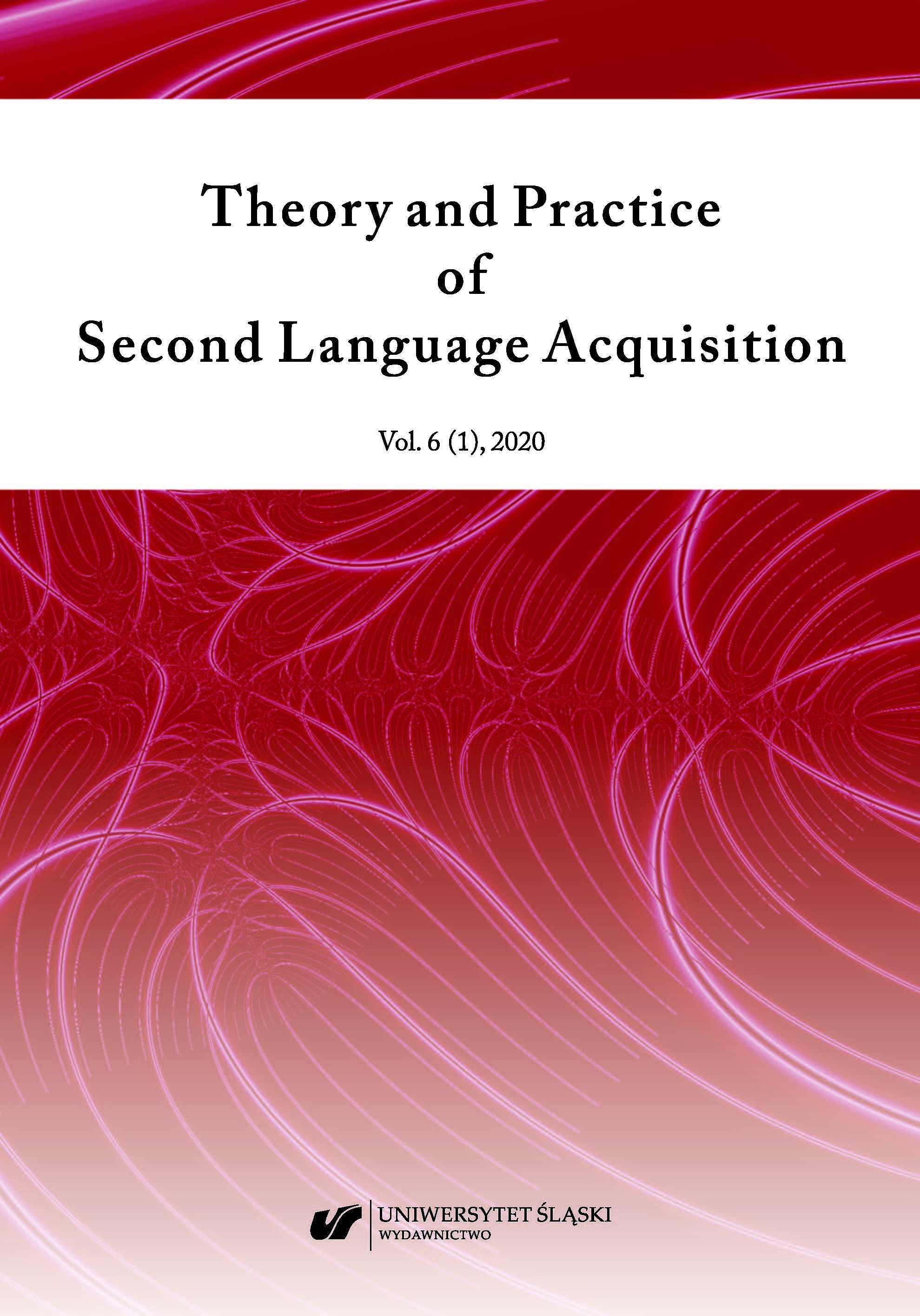Author. (2019a). Intra-individual variability in the emergence of complexity, accuracy and
fluency in speaking English at secondary school–a case study of a good, average and poor language learner. Anglica Wratislaviensia, LVII, 181-204.
Author. (2019b). Intra-individual variability in the emergence of syntactic
complexity in English L2 speech at secondary school–a case study of a good, average
and poor language learner. In press.
Ai, H. & Lu, X. (2010). A web-based system for automatic measurement of lexical
complexity. Paper presented at the 27th Annual Symposium of the Computer-Assisted
Language Consortium (CALICO-10). Amherst, MA. June 8-12.
Bailey, C. (1973). Variation and linguistic theory. Washington, DC: Centre for Applied
Linguistics.
Bickerton, D. (1975). Dynamics of a creole system. Cambridge: Cambridge University Press.
Cancino, H., Rosansky, E. & Schumann, J. (1978). The acquisition of English negatives and
interrogatives by native Spanish speakers. In E.M. Hatch (Ed.) Second language
acquisition: A book of readings (pp. 207-230). Rowley, MA: Newbury House.
Chomsky, N. (1965). Aspects of the theory of syntax. Cambridge, Mass.: MIT Press
de Bot, K. (1992). A bilingual production model: Levelt’s “Speaking” model adapted.
Applied Linguistics, 13, 1-24.
Cobb, T. Compleat Web VP v. 2 [computer programme]. Accessed 24 April 2018 at
https://www.lextutor.ca/vp/.
Crystal, D. 1982. Profiling linguistic disability. London: Edward Arnold.
de Bot, K. (2017). Complexity Theory and Dynamic Systems Theory: Same or different? In
L. Ortega, L. & Han, Z. (Eds.), Complexity Theory and language development. In
celebration of Diane Larsen-Freeman (pp. 51-58). Amsterdam: John Benjamins
Publishing Company.
Decamp, D. 1971. Implicational scales and sociolinguistic linearity. Linguistics 13: 30-43.
Ellis. R. (1994). The study of second language acquisition. Oxford: Oxford University Press.
Ellis, R. & Barkhuizen, G. (2005). Analysing learner language. Oxford: Oxford University
Press.
Gatbonton, E. (1978). Patterned phonetic variability in second language speech: A gradual
diffusion model. Canadian Modern Language Review, 34, 335-47.
Hymes, D. (1971). On communicative competence. Philadelphia, PA.: University of
Pennsylvania Press.
Kowal, I. (2016). The Dynamics of Complexity, Accuracy and Fluency in Second Language
Development. Kraków: Jagiellonian University Press.
Labov, W. (1970). The study of language in its social context. Studium Generale, 23, 30-87.
Laufer, B. (1998). The development of passive and active vocabulary in a second language:
Same or different. Applied Linguistics, 19, 255-271.
Laufer, B. & Nation, P. (1995). Vocabulary size and use: Lexical richness in L2 written
production. Applied Linguistics, 16, 307-322.
Laufer, B. & Goldstein, Z. (2004). Testing vocabulary knowledge: Size, strength, and computer
adaptiveness. Language Learning, 54, 399-436.
Larsen-Freeman, D. (2006). The emergence of complexity, fluency and accuracy in the oral
and written production of five Chinese learners of English. Applied Linguistics, 27, 590-
616.
Larsen-Freeman, D. & Cameron, L. (2008). Complex systems and applied linguistics.
Oxford: Oxford University Press.
Levelt, W. (1989). Speaking: From intention to articulation. Cambridge: Cambridge
University Press.
Lu, X. (2012). The relationship of lexical richness to the quality of ESL learners’ oral
narratives. The Modern Language Journal, 96(2), 190-208.
Malvern, D., Richards B., Chipere, N. & Duran, P. (2004). Lexical diversity and language
development: Qunatification and assessment. Houndmills: Pelgrave MacMillan.
Ochs, E. (1979). Planned and unplanned discourse. In Givon, T. (Ed.) Syntax and semantics,
Vol. 12: Discourse and semantics. New York: Academic Press.
Pfenniger, S. (2019). Non-systematic variation as a driving force in language acquisition (and
change). Paper presented at the 31st International Conference on Foreign and Second
Language Acquisition (ICFSLA ), Szczyrk, Poland.
Read, J. (2000). Assessing vocabulary. Oxford: Oxford University Press.
Schmid, M., Verspoor, M. & MacWhinney, B. (2011). Coding and Extracting Data. In:
Verspoor, M., de Bot, K. & Lowie, W. (Eds.) A dynamic approach to second language development. (pp. 39-54). Amsterdam: John Benjamins Publishing Company.
Schmitt, N. & Meara, P. (1997). Researching vocabulary through a word knowledge
framework. Studies in Second Language Acquisition, 19, 17-36.
Selinker, L. (1972). Interlanguage. International Review of Applied Linguistics, 10, 209-31.
Siegler, R. S. (2006). Microgenetic analyses of learning. In Kuhn, D. & Siegler, R. S. (Eds.)
Handbook of child psychology, volume 2: Cognition, perception, and language (6th
edition) (pp. 464-510). Hoboken, NJ.: Wiley and Sons.
Spoleman, M. & Verspoor, M. (2010). Dynamic patterns in development of accuracy and
complexity: A longitudinal case study in the acquisition of Finnish. Applied Linguistics,
31, 532-553.
Tarone, E. (1983). On the variability of interlanguage systems. Applied Linguistics, 4/2, 143-
63.
Thelen, E. & Smith, L. B. (1994). A dynamic systems approach to the development of
cognition and action. Cambridge, MA.: The MIT Press.
Ure, J. (1971). Lexical density: a computational technique and some findings. In Coultard, M.
(Ed.) Talking about text (pp. 24-48). Birmingham: English Language Research,
University of Birmingham.
van Dijk, M., Verspoor, M. & Lowie, W. (2011). Variability and DST. In Verspoor, M., de
Bot, K. & Lowie, W. (Eds.) A dynamic approach to second language development (pp.
55-84). Amsterdam: John Benjamins Publishing Company.
van Geert, P. & van Dijk, M. (2002). Focus on variability: New tools to study intra-individual
variability in developmental data. Infant Behaviour and Development, 25, 340-375.
Verspoor, M., Lowie, W. & van Dijk, M. (2008). Variability in second language development
from a dynamic systems perspective. Modern Language Journal, 92, 214-231.
Verspoor, M., de Bot, K. & Lowie, W. (2011). A dynamic approach to second language
development. Amsterdam: John Benjamins Publishing Company.
Verspoor, M., Lowie, W., van Geert, P., van Dijk, M. & Schmid, M. S. (2011). How to
sections. In Verspoor, M., de Bot, K. & Lowie, W. (Eds.) A dynamic approach to
second language development (pp. 129-199). Amsterdam: John Benjamins Publishing
Company.
Wolfe-Quintero, K., Ingaki, S. & Kim, H.-Y. (1998). Second language development in writing:
Measures of fluency, accuracy, and complexity (Report No 17). Honolulu: University of
Hawaii, Second Language Curriculum Centre.
Google Scholar


 https://doi.org/10.31261/tapsla.7929
https://doi.org/10.31261/tapsla.7929

 10.31261/tapsla
10.31261/tapsla